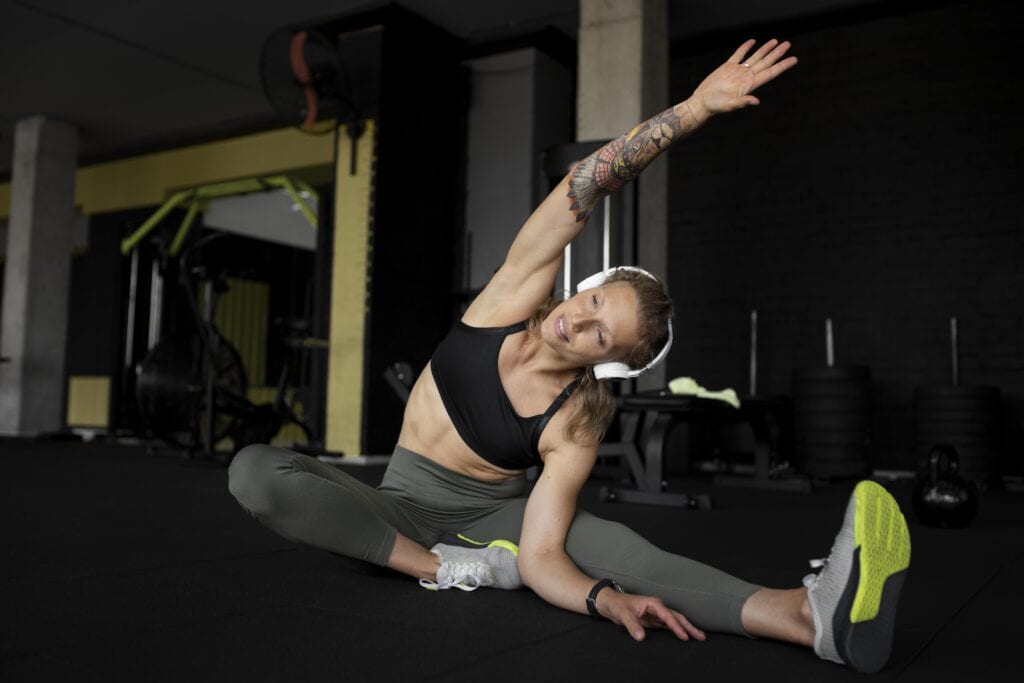It can be easy to fall into the trap of doing the “same ole same ole” when it comes to your exercise routine. Meaning, if you’re a runner, you only run and if you lift weights, you typically just do strength training. A well-rounded exercise program, however, will include five fitness components. These are: body composition, flexibility, muscular strength, muscular endurance, and cardiovascular endurance. A well rounded program targets each one over the course of the program.
Let’s take a deeper look at each of these components and see why they are important.
Body Composition
Our body is composed of water, mineral, protein and fat. Having an understanding of the make-up of each element offers value. Monitoring muscle and body fat can be a motivational tool and offer insights into your training. In addition to 1-RM testing, it allows you to see if your training plan is really progressing the way you want. How? Let’s assume someone has been training for the last 6-months. During this time has body composition changed at all? Has the person added any lean muscle? Maybe body fat has increased or decreased? You won’t know unless it’s measured and monitored over time.
When you know your body composition (muscle and fat ratio), you can better determine if a training program is truly working. Monitoring your body fat is important, and in turn, offers insight into the current status of overall health and fitness. Read this blog post if you’re interested in seeing what healthy body fat ranges are. Use the Jefit app to record your girth and body fat measurements. To do this, look under the “Profile tab” on the app.

Flexibility
This category, in my opinion, could morph into more of a catch all and include mobility, etc. Flexibility is the ability of a joint to move through a full range of motion without pain. There are many ways to work on and improve flexibility. These may include dynamic stretching, yoga, pilates and even massage or myofascial release. Flexibility can improve performance, help posture, promote better movement, maintain appropriate muscle balance and possibly decrease injury risk.
When someone is lacking flexibility, they are not able to perform at an optimal level. Have you ever tried to lift a weight or run with a very tight back? An easy way to incorporate this into your training routine is to use a foam roller on a regular basis. Once done, add time for flexibility before you start your strength training session. This way you’ll address it at least a few times each week. You can also add foam rolling, flexibility, and mobility work in on your off days.
Muscular Strength: An Important Fitness Component
Use it or lose it! The average person will lose 30 percent of their strength by the time they reach their seventh decade. After age 35, you start to lose about 3 to 5 percent of your strength per decade. So, I guess it’s pretty important to increase and then maintain strength over time?
Strength is defined as how much force you can exert and how much weight you can lift over a short period of time. Basically, you can think of it as your ability to move and lift objects. Muscular strength is determined by how much force someone can exert or how much weight they can lift. Use the Jefit app (“Progress tab” then click “Compare with”) to see your 1-RM scores over time for bench press, squat and deadlift.
Muscular Endurance
Muscle endurance is not only an important fitness component, it needs to be an integral part of your training routine. It is a measure of how long a muscle or group of muscles are able to work against a resistance over a sustained period of time. One idea for this component is to take a day a week and work on developing muscle endurance. There is always the option of following up a strength mesocycle with some endurance work. It is important to work periodically on muscle endurance for every day activities and especially if you’re an athlete.
Cardiovascular Endurance
Cardiovascular endurance is the ability tp perform work over a sustained period of time. This means, as an example, the ability to do a 15 or 20 minute HIIT workout or a series of interval sets on a piece of cardio equipment at the gym or home. DeAnne Davis Brooks, EdD, CSCS, an associate professor at the University of North Carolina Greensboro explains it as “the ability of your heart, blood vessels, and lungs to supply oxygen-rich blood to the body over an extended period of time.” Use the Jefit app to plan and track all your cardio workouts.
Final Thoughts
Collectively, this may seem like a lot of extra work to track these components. You can always begin with one or two of the fitness variables mentioned here and incorporate more as time goes on. Each is valuable in its own right and needed to get a full picture of your progress. In the long run, they can only help you on your fitness journey.
Use Jefit to Record and Track Your Five Fitness Components
To help you plan, log and track your strength training workouts, download the award-winning Jefit app. One of the great training tools featured on the Jefit app is the ability to record 1-RM for each exercise. In fact, if you come back after time off, choose a lighter percentage of your 1-RM initially before building back up slowly. This will help keep overtraining type injuries at bay. Stay Strong with Jefit!
- 3 High Calorie Burning Outdoor Activities to Try - April 17, 2024
- Rowing: One of the Best Full Body Workouts You Can Do - April 15, 2024
- Want Strong Abs? Do More Core Stabilization Exercises - April 12, 2024

